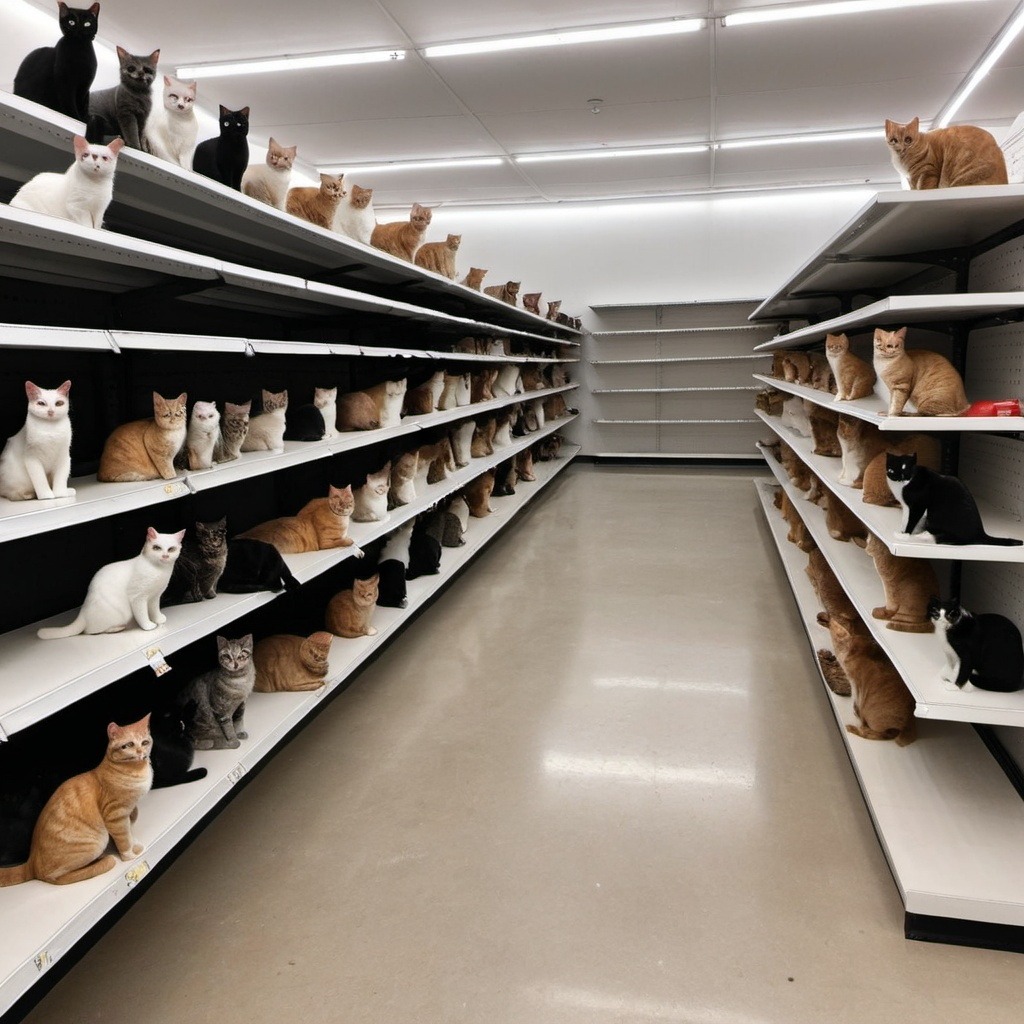
www.catster.com
10 Most Popular Vet Apps for Your Pet (2024 Update)
The post 10 Most Popular Vet Apps for Your Pet (2024 Update) by Jessica Kim appeared first on Catster. Copying over entire articles infringes on copyright laws. You may not be aware of it, but all of these articles were assigned, contracted and paid for, so they aren't considered public domain. However, we appreciate that you like the article and would love it if you continued sharing just the first paragraph of an article, then linking out to the rest of the piece on Catster.com.
Pet apps have become all too familiar with the modern pet parent. With more and more people seeking virtual pet care services, we’ve seen a rise in the development of vet apps to meet growing demands.
Vet apps can provide pet telehealth services, and some are designed to help improve communication between veterinarians and their clients. While they can’t completely replace in-person vet appointments and annual checkups, they can still provide significant benefits for many cat owners. Our list of the most popular vet apps will help you understand what sorts of apps are currently available and if they’d be useful for you.
How Are Vet Apps Classified?
Image Credit: LightField Studios, Shutterstock
You can find several kinds of vet apps designed for different uses. The most common types of vet apps provide tele-triage services, telemedicine services, and veterinary clinic operations software.
Tele-triage apps typically connect you with a veterinary care professional, such as a veterinarian or a veterinary technician, and they can answer general health questions you may have regarding your cat. They can’t make diagnoses or prescribe medication. However, they can let you know if your cat requires immediate veterinary care or if you can wait until the next day to see your veterinarian. They’ll also give you information on how to care for your cat until your next appointment.
Telemedicine apps provide more thorough care for cats. While they can’t completely replace in-person appointments and annual checkups, they can connect you with a veterinarian to check on your cat’s condition. Some telemedicine apps enable veterinarians to make diagnoses and prescribe medication for your cat. However, these services vary between apps and depend on state laws. So, not all telemedicine apps will guarantee that a veterinarian can make a diagnosis via telecommunication.
Lastly, veterinary clinics may opt to use an app or software that makes office operations run more smoothly. These apps usually enable users to book or reschedule appointments, request medical records, and communicate with an on-call veterinarian for after-hours emergencies.
The 10 Most Popular Vet Apps
1. PetDesk
Get the iOS App Here Get Android App Here
Number of ratings:
378,400+ ratings
Rating score:
4.9/5 stars App Store; 4.7/5 stars Google Play Store
App type:
Veterinary practice operations
PetDesk is a vet app that’s designed to make communication between vets and their clients much easier and seamless. Once clients are input into the system, they can book appointments, fill out forms, and make payments. The app is also capable of sending automated appointment reminders and health check notifications.
Vet clinics can benefit from PetDesk’s digital marketing and custom loyalty program features, as they can help attract new clients, retain current clients, and boost revisits. The app also has a two-way texting feature that clients can use to communicate with on-call vets for appointment follow-up questions and quick health-related inquiries.
2. PetsApp
Get the iOS App Here Get Android App Here
Number of ratings:
35,000+ ratings
Rating score:
5/5 stars App Store; 4.7/5 stars Google Play Store
App type:
Tele-triage
PetsApp enables tele-triage and appointment booking services for vets and their existing clients. Clients with veterinarians who use PetsApp can schedule appointments and make payments for medical bills through the app. The app can also send reminders for appointments and health goals.
PetsApp enables clients to communicate with their veterinary practice through text or video calls. You can send pictures and videos of your cat, and your vet can determine the best course of action for caring for your cat or if you need to bring them into the clinic.
3. Airvet
Get the iOS App Here Get Android App Here
Number of ratings:
8,300+ ratings
Rating score:
4.9/5 stars App Store; 4.8/5 stars Google Play Store
App type:
Tele-triage
Airvet is a pet tele-triage company that has served over 200,000 pet owners and has thousands of vets using its app and software. While any pet owner will benefit from using a pet tele-triage service, this app is particularly useful for cat owners with older cats with chronic health issues because it offers its members unlimited use.
The app requires a monthly subscription of $35 per month. Member subscriptions enable 24/7 access to pet tele-triage services with one of Airvet’s registered vets, and they can expect quick real-time responses via text, phone, or video calls. There’s also no limit to how many times you can contact and connect with a vet.
4. Pawp
Get the iOS App Here Get Android App Here
Number of ratings:
7,300+ ratings
Rating score:
4.8/5 stars App Store; 4.7/5 stars Google Play Store
App type:
Tele-triage
Pawp is another popular pet tele-triage app that offers 24/7 on-demand support to its subscribers. The subscription membership fee is $19 a month, and it gives unlimited communication to Pawp’s network of vets. Cat owners can connect with a vet and ask questions related to sudden sickness, changes in behavior, and breed-specific health and wellness. There are also no additional charges for follow-up appointments and communication.
Another benefit of using Pawp is that it offers a one-month free trial. Pawp also has an Emergency Fund, which is an optional add-on that provides up to $3,000 in financial aid for life-threatening emergency medical situations.
5. Otto: Your Pet’s App
Get the iOS App Here Get Android App Here
Number of ratings:
3,500+ ratings
Rating score:
4.8/5 stars App Store; 4.7/5 stars, Google Play Store
App type:
Veterinary clinic operations and workflow
Otto is a software and app designed to make managing and operating vet clinics much easier and less stressful. Some of its key features include sending automated messages and forms so that clients have all the necessary intake forms filled out before their appointment. Otto can also enable clients to book appointments online at any time so that they’re not restricted to making and confirming appointments during clinic office hours.
Additional services Otto provides include seamless payment systems and after-appointment care options. Veterinary clinics can also opt to use Otto’s 24/7 tele-triage service that connects clients to a vet during off-hours.
6. FirstVet
Get the iOS App Here Get Android App Here
Number of ratings:
1,800+ ratings
Rating score:
5/5 stars App Store; 4.4/5 stars Google Play Store
App type:
Tele-triage
FirstVet is a viable app for any accidents or illnesses your cat experiences from home. Unlike many other pet tele-triage apps, FirstVet doesn’t require a monthly subscription in order for people to use it. Once you download the app and register your pet, you can choose to make payments for single sessions. Of course, you’ll receive discounted prices if you choose a subscription plan, and these plans offer unlimited consultations.
7. PetCoach by Petco
Get the iOS App Here Get Android App Here
Number of ratings:
1,500+ ratings
Rating score:
4.6/5 stars App Store; 3.6/5 stars Google Play Store
App type:
Pet health and wellness advice
PetCoach is an app that provides general health advice for pets. It’s completely free, and you can submit questions to vets without making any payments. The only downside is that it can take some time to receive a response. So, it’s not a recommended option if you’re facing an emergency.
One of the key features of PetCoach is its extensive article database. It has over 1 million vet-reviewed articles about all kinds of health and wellness questions for different kinds of pets. So, if you’re waiting to receive a response to a question you’ve submitted, you can check PetCoach’s database to see if a related article exists.
8. Dr.Tail
Get the iOS App Here Get Android App Here
Number of ratings:
1,000+ ratings
Rating score:
4.7/5 stars App Store; 4.7/5 stars Google Play Store
App type:
Tele-triage
Dr.Tail is a pet tele-triage app that connects its users to vets in 30 minutes or less. Vets can answer general health questions and give you care advice when you’re concerned about your cat’s health. Similar to PetCoach, Dr. Tail has a database of previously asked questions that its users can read through if they want more information on a specific health issue.
This app does require a monthly subscription, but it offers a free one-month trial. So, you have plenty of time to test it out before choosing to pay for a subscription.
9. Vetster: 24/7 Online Vets
Get the iOS App Here Get Android App Here
Number of ratings:
800+ ratings
Rating score:
4/5 stars App Store; 3.9/5 stars Google Play Store
App type:
Tele-triage, prescribe medication (only in some states)
Vetster provides on-demand virtual vet appointments. With Vetster, you can communicate with a vet through live chat or video calls at any time of day or night. Vets can determine if your cat’s condition is urgent or non-urgent and help you avoid any unnecessary emergency room visits. They can also answer questions about cat behavior and nutrition. Some states allow licensed veterinarians to prescribe medication through the Vetster app.
10. AskVet
Get the iOS App Here Get Android App Here
Number of ratings:
300+ ratings
Rating score:
4.1/5 stars App Store; 3.9/5 stars Google Play Store
App type:
Tele-triage, veterinary practice operations
AskVet uses data and AI to assist vets in providing 24/7 tele-triage services to their clients. It can also help vet clinics operate more smoothly by making appointments with clients, sending forms and documents, and creating aftercare instructions.
AskVet is also designed for pet parents. Once you sign up for their monthly subscription, you’ll have 24/7 access to licensed vets and can ask pet health and behavior questions. AskVet also provides one-on-one consultations and coaching for pet wellness.
Conclusion
Vet apps are designed to give you peace of mind and help you keep track of your cat’s health in between annual checkups. They can help you avoid unnecessary emergency room visits and get responses more quickly at any time of day. If your vet uses an app for their clinic, you can experience more convenient and efficient servicing.
Of course, vet apps are still a relatively new thing, and there’s much room for improvement. We’ll have to continue to keep track of technological advances and see how vet apps will continue to provide support for cat parents.
Featured Image Credit: Scharfsinn, Shutterstock
The post 10 Most Popular Vet Apps for Your Pet (2024 Update) by Jessica Kim appeared first on Catster. Copying over entire articles infringes on copyright laws. You may not be aware of it, but all of these articles were assigned, contracted and paid for, so they aren't considered public domain. However, we appreciate that you like the article and would love it if you continued sharing just the first paragraph of an article, then linking out to the rest of the piece on Catster.com.

















